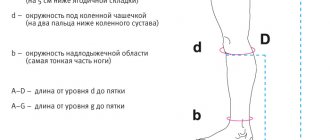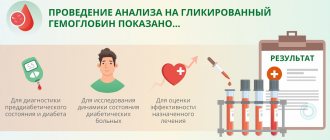General information
As part of the coagulogram, a study of thrombin time is carried out, which characterizes the last stage of blood coagulation - the conversion of fibrinogen (a protein in a blood clot) into fibrin (the basis of a blood clot) as a result of the reaction of blood with thrombin and calcium.
The analysis is prescribed to determine hereditary disorders, blood diseases, oncological processes, liver pathologies, as well as during pregnancy (to prevent the development of critical conditions during pregnancy and childbirth).
Thrombin time is an indicator of the rate of conversion of fibrinogen to fibrin under the influence of the coagulation factor thrombin. Based on the results of this study, pathologies of blood clotting are identified in the process of secondary hemostasis (formation of a blood clot), which occurs in 3 stages.
- The coagulant thrombin acts on the fibrinogen protein in such a way that it turns into fibrin monomer (a clot with a jelly-like consistency).
- From several fibrin monomers, fibrin polymer is obtained (the trace element calcium is involved in the reaction).
- Fibrin polymers combine with red blood cells and platelets to form fibrin, which is insoluble in the blood. As a result, bleeding is stopped by a blood clot - a thrombus.
All stages of secondary hemostasis occur within a limited time (with the exception of dysfunctional disorders of the hematopoietic organs). The rate of clot formation depends on the biological usefulness of fibrinogen and the level of coagulants and anticoagulants.
One of the most dangerous conditions is hypofibrinogenemia - when the walls of blood vessels or organ tissues are damaged, prolonged bleeding occurs. Also, prolongation of thrombin time occurs when taking heparin or other anticoagulants that neutralize thrombin. Sometimes the cause of slow blood clotting is the secretion of autoimmune antibodies to thrombin or the presence of paraproteins in the plasma that interfere with the second stage of fibrin conversion.
In the case of hyperfibrinogenemia, the blood clots faster than necessary, which can lead to thrombosis (blockage of the lumen of blood vessels).
The thrombin time test is most indicative in the diagnosis and treatment of DIC syndrome (disseminated intravascular coagulation) associated with fibrin degradation.
Liver diseases can cause deviations from the normal thrombin time.
Diseases that affect the duration of clotting can be acquired, hereditary or congenital. Acquired ones are associated with lifestyle, nutrition, bad habits, and a history of diseases (arthritis, cardiovascular pathologies, oncology). Also, thrombin time may deviate from the norm during a pathological pregnancy and/or after a difficult birth. Most often, hypofibrinogenemia is observed, which increases the likelihood of bleeding.
Congenital or hereditary bleeding disorders are quite rare, as they are formed as a result of genetic mutations.
Changes in indicator during pregnancy
Monitoring this indicator of blood clotting is extremely important during pregnancy, especially when pregnant women are taking medications that affect the blood clotting process. Normally, thrombin time during pregnancy is increased and ranges from 18 to 25 seconds. Imbalance of the coagulation and anticoagulation systems can lead to serious complications during pregnancy. The most dangerous is disseminated intravascular coagulation (DIC), which develops as a result of activation of the coagulation system on the one hand and the fibrinolysis system on the other. In pregnant women, DIC syndrome can be caused by various reasons:
- premature placental abruption with bleeding, which is caused by a decrease in the concentration of coagulation factors in the plasma.
- amniotic fluid embolism – leads to shock and acute respiratory failure and the development of disseminated intravascular coagulation syndrome due to the entry into the bloodstream of a large amount of tissue thromboplastin, which triggers the blood clotting process;
- endometritis, as a complication after childbirth, can lead to the development of a fulminant form of DIC syndrome.
A common cause of miscarriage is antiphospholipid syndrome, which is characterized by arterial and venous thrombosis, leading to disturbances in intrauterine development of the fetus. Pregnant women with APS are at high risk of spontaneous abortion and miscarriage. In the clinic, determination of thrombin time is used for monitoring during heparin therapy and fibrinolytic therapy, for diagnosing activation of fibrinolysis, as well as indirect diagnosis of dysfibrinogenemia.
time, blood clot
Indications
- Identification of defective forms of fibrinogen or its deficiency (congenital/acquired);
- Diagnosis of hyper- and hypofibrinogenemia;
- The presence of fibrinogen and fibrin breakdown products in the blood;
- Diagnosis and treatment of DIC syndrome;
- Dysfunction or pathology of the liver structure;
- Pain in the liver area of unknown etiology;
- Deviations of pressure inside the vessels in one direction or another;
- Monitoring treatment with anticoagulants (heparin), thrombolytics and fibrinolytics;
- Pregnancy (pathological, spontaneous termination);
- As part of a comprehensive coagulogram.
A coagulogram test is prescribed and its results are interpreted by doctors: hematologist, resuscitator, anesthesiologist, gynecologist, pediatrician, therapist, etc.
When is a test ordered?
Thrombin time may be ordered alone or in conjunction with other tests if the patient has bleeding or clotting, recurrent miscarriages, or unexplained prolonged primary coagulation results such as prothrombin time or partial thromboplastin time.
This test is ordered if a healthcare practitioner suspects that a person may have a disorder associated with low or dysfunctional fibrinogen. However, as mentioned above, fibrinogen functional assay has largely replaced TV for fibrinogen assessment. Sometimes a coagulation test is ordered when a sample is suspected of being contaminated with heparin or when undergoing therapy, although the use of this drug has declined.
Other tests to measure clotting may be needed. These include:
- Research on reptilase timing. Like TV, this test measures how long it takes fibrinogen to convert to fibrin. This shows whether thrombin is increased due to heparin.
- Prothrombin time. The test provides information about fibrinogen and other blood fragments that help form clots. It is also used to measure the effects of warfarin.
- Activated partial thromboplastin time. The test provides information about clotting factors. And it is used to measure the effects of heparin.
Thrombin time is normal
To measure thrombin time, the following reference values are accepted:
- 10.3 – 16.6 seconds.
Factors influencing the result
Sometimes the results may be distorted. There are a number of reasons for this:
- Age (in newborns, thrombin time is normally prolonged);
- Violations of the rules for preparing for a coagulogram;
- Violations of the algorithm for blood collection, its transportation and storage;
- Incompetence of laboratory workers;
- Taking interfering drugs;
- Transfusion of frozen plasma shortly before the test (hides quantitative and structural fibrinogen abnormalities);
- Menstruation (reduces clotting rates);
- Acute febrile syndrome in a patient during venous blood sampling;
- Recent injuries, wounds, burns, surgery.
Tips for preparing for analysis
Advice for preparing for a thrombin time blood test should be given by the referring physician. The study of the indicator is carried out in blood plasma, which is most often obtained by centrifugation of venous blood.
There is nothing difficult in preparing for this analysis:
- blood should be donated on an empty stomach;
- the day before blood sampling, it is important not to overexert yourself physically;
- eliminate emotional stress the day before the test;
- do not smoke for several hours before going to donate blood;
- talk with your doctor about what medications the patient is taking and whether they may affect the results of the study.
Often, taking anticoagulants leads to an overestimation of the indicator, which disrupts the diagnosis process.
Increasing values (extending interval)
- Liver pathologies;
- Uremia (intoxication of the body due to kidney disease);
- DIC syndrome;
- Deficiency of protein intake in the body;
- Pathological pregnancy (miscarriage, placental abruption);
- Cardiovascular diseases (heart attack, stroke);
- Pneumonia (pneumonia);
- Hyperbilirubinemia (increased levels of bilirubin in the blood);
- Tuberculosis (infectious disease caused by Koch's bacillus);
- Hypofibrinogenemia (with the level of fibrinogen in the blood less than 0.5 g per 1 l) in acquired or congenital form;
- Dysfibrinogenemia (defect in the structure of fibrinogen at the molecular level);
- Paraproteinemia (presence of defective and abnormal protein compounds in the plasma);
- An increase in fibrin and fibrinogen breakdown products in the blood;
- The presence of anticoagulants in the plasma (antithrombins, hirudin, heparin and others);
- Fibrinolytic therapy (a type of treatment aimed at restoring blood flow by dissolving a blood clot);
- Development of autoimmune antibodies to thrombin;
- Production of lupus anticoagulant (antibodies against enzymes of the circulatory system);
- Myeloma multiforme (cancer of blood plasma cells) and other oncological processes.
Why is thrombin time elevated?
Normal thrombin time values indicate a healthy coagulation system. When taking acetylsalicylic acid, the interval between the appearance of a thrombosed vessel is prolonged.
If the thrombin time is reduced, then this is a consequence of the following reasons:
- Incorrect dose of warfarin, fluconazole, fluzamed, plestazol, limistin or cardiomagnyl.
- Liver diseases.
- Vitamin K deficiency.
- Hemostatic disorders such as factor II deficiency.
- Miscarriage or last week of pregnancy.
- Hemophilia A or B.
- Deficiency of blood clotting factors.
- Von Willebrand disease (a disorder that causes abnormal blood clotting).
- Disseminated intravascular coagulation (a disease in which the proteins responsible for blood clotting are abnormally active).
- Hypofibrinogenemia (deficiency of the blood clotting factor fibrinogen).
- Nutritional problems such as vitamin K deficiency and malabsorption.
- Immunoglobulins, including antibodies to cardiolipin.
- Lupus anticoagulants.
- Leukemia.
The wide range of possible causes of long thrombin clotting suggests that further diagnostic workup is required. An abnormal result is not a diagnosis, but a reason to conduct more examinations to determine the cause.
For severe hemostasis disorders, treatment with coagulants and blood transfusions are indicated. Insufficiency of several factors of the prothrombin complex is the main genetic factor of hypoptrombinemia.
Liver diseases affect hemostasis. Most of the coagulation factors are synthesized by hepatocytes. Liver cirrhosis, hepatitis or various forms of liver cell degeneration lead to an increase in thrombin time. Reducing prothrombin time selectively in such cases is a pointless exercise. The underlying cause of the coagulopathy must be treated.
Oncological diseases of the blood increase thrombin time. Malignant neoplasms lead to serious changes in the blood coagulation system. It is important to constantly monitor coagulation factors in order to promptly apply appropriate treatment methods.
Complexes with this research
Extended coagulogram Extended study of the functional state of hemostasis 3,100 ₽ Composition
Female infertility Analysis of the state of female reproductive health 10,320 ₽ Composition
Coagulogram Study of the functional state of hemostasis 1,300 ₽ Composition
IN OTHER COMPLEXES
- Miscarriage RUB 30,380
- Pregnancy planning. Clinical indicators RUB 4,380
- Examination during pregnancy. 1st trimester 11,430 RUR
- Examination during pregnancy. 3rd trimester 6,380 RUR
- Joining IVF RUB 16,180
Diagnostics
The coagulation screening test is designed to assess the formation of fibrin from fibrinogen in plasma. Thrombin time is performed as the next step in assessing abnormally prolonged activated thromboplastin or prothrombin. Normal thrombin time excludes deviations in the process of fibrin formation in the coagulation cascade. Low rates are rare and occur in patients treated with dextran or hydroxyethyl starch, or in individuals with certain forms of hereditary disease. A high thrombin rate indicates fibrinogen abnormality or impaired fibrin formation.
The test can be used to diagnose problems such as:
- hereditary conditions leading to low fibrinogen or fibrinogen disorders;
- liver diseases such as cirrhosis, hepatitis and cancer;
- renal carcinoma or multiple myeloma;
- lupus and ulcerative colitis;
- common intravascular coagulation, a disease in which the body uses more fibrinogen.
Some medications may also increase thrombin time:
- heparin;
- warfarin;
- hirudin;
- bivalirudin;
- argatroban.










